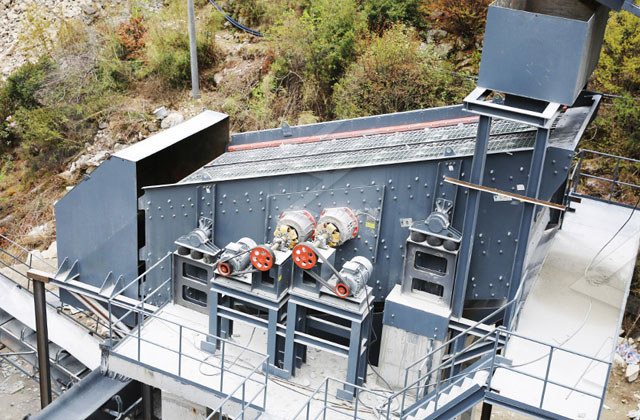A gravel vibrating screen is a type of industrial equipment used to separate and size different types of materials, including gravel. It plays a crucial role in the mining, construction, and industrial sectors by efficiently sorting and segregating various particles based on size. The primary purpose of a gravel vibrating screen is to facilitate the separation of different-sized particles, allowing for the efficient processing and handling of materials in various industries.

Working Principle:
The working principle of a gravel vibrating screen involves the use of a vibrating motor that causes the screen to vibrate in a specific manner. The vibration is generated by an unbalanced flywheel or rotor, which is located at the upper and lower ends of the vibrating motor. The vibration generated from the motor is transmitted to the screen, causing it to vibrate and separate the materials according to their size.
- Structural Composition: A typical gravel vibrating screen consists of several main components, including the screen box, screen mesh, vibration exciter, damping spring device, and support base. The screen box is usually made of welded steel plates and is equipped with different layers of screen mesh, each with varying mesh sizes to facilitate the sorting of materials.
- Vibration Exciter: The vibration exciter is the main component responsible for generating the necessary vibration in the screen. It typically consists of an eccentric shaft with eccentric blocks at both ends. When the motor rotates, the eccentric blocks generate centrifugal force, causing the screen box to vibrate in a circular motion.
- Damping Spring Device: Damping spring devices are installed to reduce the impact of vibration and ensure the smooth operation of the vibrating screen. These springs absorb the vibration generated by the screen box, thereby minimizing the transmission of excessive vibration to the surrounding environment.
- Support Base: The support base provides a stable foundation for the entire vibrating screen. It is usually made of welded steel and is designed to withstand the dynamic forces generated during the screening process.
Working Process:
The gravel vibrating screen operates based on the principle of particle size separation. The raw material is fed onto the screen, where it is subjected to the vibrating motion. As the screen vibrates, smaller particles pass through the screen mesh and are discharged as the oversize materials are retained on the screen surface. The amplitude and frequency of the vibration can be adjusted to optimize the efficiency of the screening process, ensuring the proper separation of materials based on their sizes.
Applications:
Gravel vibrating screens find applications in various industries, including mining, construction, and aggregate processing. They are commonly used in the following applications:
- Aggregate Processing: Gravel vibrating screens are widely used in the processing of various types of aggregates, such as sand, gravel, and crushed stone, to separate and classify different particle sizes for further processing.
- Mining Operations: In mining operations, gravel vibrating screens are utilized to separate and classify ores and minerals based on their sizes. This process is crucial for efficient mineral extraction and processing.
- Construction Industry: Gravel vibrating screens are also used in the construction industry to separate and classify different types of construction materials, ensuring that only materials of the desired size are used in construction projects.
Overall, gravel vibrating screens play a vital role in various industrial applications, enabling the efficient separation and classification of materials based on their sizes. By understanding the working principle and the essential components of these vibrating screens, industries can optimize their screening processes and enhance their overall productivity and efficiency.
